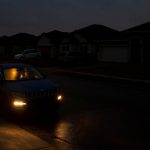In the boreal forests of the far northern hemisphere, where the climate is warming faster than almost anywhere else, some wildfires are surviving winter snows and picking up again in spring.
Now scientists from the Netherlands and Alaska have figured out how to calculate the scope of those “zombie fires” that smoulder year-round in the peaty soil.
The study, published in the journal Nature, found that overwintering fires are still relatively rare in boreal forests: between 2002 and 2018 they were responsible for just 0.8% of the total burned area. But this varied dramatically depending on the warmth of the summers, the authors found, with the number rising to 38% of burn area one year.
This suggests potentially more overwintering fires as the climate warms, landscapes dry out and summertime blazes become increasingly ferocious, the researchers said.
“We know that fires can start in the fire season by lightning and humans. Now we can have another cause of burned area. If it happens near a fire scar from the year before, early in the season, and there’s no lightning and it’s not human, then it’s an overwinter fire,” said Sander Veraverbeke, a landscape ecologist at Vrije Universiteit Amsterdam and co-author of the study.
“I think a general perception of people when they think about forest fires, they think about trees burning,” he said. “But in these areas in the high north, in the boreal forest, about 90% of the carbon that is emitted comes from the soil.”
To calculate the extent of zombie fires in the area, the researchers built a computer algorithm that takes into account satellite imagery and records of lightning strikes and human presence and infrastructure. For Alaska and the Northwest Territories, the algorithm produced an estimate of 0.8% of burned area over a nearly two-decade period.
Zombie fires have also been recorded in Siberia in recent years, and the new algorithm could be used with local data to estimate the scope of overwintering fires in northern Russia, Veraverbeke said.
To survive the winter, fires have to burn especially hot and deep, the study suggests. The amount of rain or snow that falls appears to be inconsequential, according to the study.
“The sheer fact that this is happening is already pretty crazy and shows how fast this region is changing because of climate change,” Veraverbeke said.
Nancy Fresco, a landscape ecologist and climate researcher at the University of Alaska Fairbanks who was not involved in the study, said the findings underlined the vulnerability of boreal peat, which protects permafrost below and holds huge stores of sequestered carbon. The potential for increased wildfire in the region threatens to release more greenhouse gases into the atmosphere, she said.
Separately, scientists have determined that climate change – and melting sea ice – will lead to an increase in lightning strikes in the region, which could also trigger more fires.
“What has been in the past a relatively rare phenomenon might become something more frequent and catastrophic,” Fresco said.

Average Rating